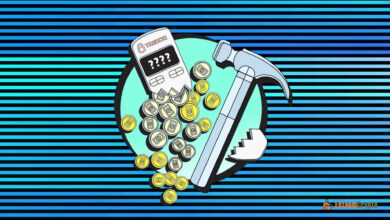Best 5 Crypto Trading Bot Software Maximize Your Gains

The cryptocurrency market never sleeps, operating 24/7 across global exchanges with constant price fluctuations and trading opportunities. For modern investors seeking to maximize their crypto gains, automated trading software has become an indispensable tool in navigating this volatile landscape. Crypto trading bots represent the evolution of traditional trading, offering sophisticated algorithms that execute trades faster than any human trader could manage.
In today’s competitive cryptocurrency environment, manual trading often falls short of capturing optimal opportunities. Market movements happen in milliseconds, and emotional decision-making can lead to significant losses. This is where cryptocurrency trading bots excel, providing systematic, emotion-free trading strategies that operate continuously across multiple exchanges simultaneously.
The best crypto trading bot software combines advanced technical analysis, machine learning capabilities, and proven trading strategies to generate consistent profits. These automated cryptocurrency platforms offer features like grid trading, dollar-cost averaging (DCA), arbitrage opportunities, and portfolio rebalancing – all executing trades based on predefined parameters and market conditions.
Professional traders and institutions have long relied on algorithmic trading to gain competitive advantages, and now retail investors can access similar sophisticated tools. The top crypto trading bots in 2025 offer user-friendly interfaces, comprehensive backtesting capabilities, and integration with major cryptocurrency exchanges like Binance, Coinbase Pro, and Kraken.
Whether you’re a beginner looking to automate simple strategies or an experienced trader seeking advanced algorithmic solutions, selecting the right crypto bot software can significantly impact your trading performance. The key lies in understanding each platform’s strengths, fee structures, supported exchanges, and the specific trading strategies they excel at implementing.
What Are Crypto Trading Bots
Crypto trading bots are sophisticated software programs designed to automatically execute cryptocurrency trades on behalf of users based on predefined algorithms and market analysis. These automated trading systems eliminate the need for constant market monitoring by implementing systematic trading strategies that operate 24/7 across multiple cryptocurrency exchanges.
The core functionality of cryptocurrency trading bots revolves around analyzing market data, identifying trading opportunities, and executing buy or sell orders according to predetermined criteria. Unlike manual trading, these algorithmic trading platforms can process vast amounts of market information in real-time, including price movements, trading volumes, order book depths, and technical indicators.
Modern crypto bot software employs various sophisticated strategies, including grid trading, which places multiple buy and sell orders at different price levels to capture profits from market volatility. Dollar-cost averaging (DCA) bots systematically purchase cryptocurrencies at regular intervals regardless of price fluctuations, reducing the impact of market timing on investment returns.
AI-powered trading bots represent the latest evolution in automated cryptocurrency trading, utilizing machine learning algorithms to adapt their strategies based on historical performance and changing market conditions. These advanced systems can identify complex patterns in market behavior that human traders might miss, potentially leading to more profitable trading decisions.
The best automated crypto trading platforms offer comprehensive features, including portfolio management, risk assessment tools, backtesting capabilities, and integration with major cryptocurrency exchanges. Users can customize trading parameters, set stop-loss limits, and define profit targets while the bot handles the technical execution of trades.
Security remains paramount in crypto trading automation, with reputable platforms implementing robust encryption, two-factor authentication, and API-only access that never requires sharing private keys. This ensures that while bots can execute trades, they cannot withdraw funds from user accounts, maintaining security while enabling automated trading functionality.
Benefits of Using Crypto Trading Bots
24/7 Market Operation
Cryptocurrency trading bots provide the invaluable advantage of continuous market operation, ensuring you never miss profitable opportunities regardless of time zones or sleep schedules. The crypto market operates around the clock, and automated trading software can capitalize on price movements that occur during off-hours when manual traders are unavailable.
Emotion-Free Trading
One of the most significant advantages of crypto bot software is the elimination of emotional decision-making from trading processes. Fear and greed often lead to poor investment choices, but algorithmic trading systems execute trades based solely on data analysis and predefined strategies, maintaining consistency even during market volatility.
Speed and Efficiency
Automated cryptocurrency platforms can execute trades in milliseconds, far faster than any human trader. This speed advantage becomes crucial in volatile markets where price movements happen rapidly. Crypto trading automation ensures optimal entry and exit points by reacting instantaneously to market conditions.
Multi-Exchange Operations
The best crypto trading bots can simultaneously monitor and trade across multiple cryptocurrency exchanges, identifying arbitrage opportunities and ensuring access to the best prices available. This multi-exchange capability maximizes profit potential while diversifying risk across different trading platforms.
Advanced Strategy Implementation
Top crypto trading bots offer sophisticated trading strategies that would be challenging to implement manually. Features like grid trading, DCA strategies, portfolio rebalancing, and complex technical analysis become easily accessible through automated trading solutions.
Reduced Human Error
Manual trading often involves calculation errors, missed opportunities, or incorrect order placements. Cryptocurrency trading bots eliminate these human errors by precisely executing predetermined strategies with mathematical accuracy, ensuring consistent performance.
Backtesting Capabilities
Professional crypto trading bot software provides comprehensive backtesting features, allowing users to test trading strategies against historical market data before risking real capital. This capability enables strategy optimization and performance validation.
Top 5 Best Crypto Trading Bot Software
Cryptohopper – Best Overall Trading Bot
Cryptohopper stands out as the best crypto trading bot for its comprehensive feature set and user-friendly interface. This platform leads rankings thanks to its one-click automation and support for more than 100 coins across 15 major exchanges, making it suitable for both beginners and experienced traders.
How to Choose the Right Crypto Trading Bot
Assess Your Trading Experience Level
Selecting the appropriate crypto trading bot software begins with honestly evaluating your experience with cryptocurrency trading and technical analysis. Beginner traders should prioritize platforms like TradeSanta or Pionex that offer user-friendly interfaces, pre-configured strategies, and comprehensive educational resources.
Intermediate traders with some market knowledge might benefit from Cryptohopper or 3Commas, which provide more customization options while maintaining accessibility. Advanced traders seeking maximum control may prefer platforms offering extensive programming capabilities and sophisticated strategy development tools.
Define Your Trading Goals and Strategy
Different automated trading platforms excel at specific strategies. If your focus is on dollar-cost averaging, platforms like Pionex or 3Commas offer robust DCA implementations. For grid trading strategies, Bitsgap and Pionex provide advanced grid algorithms optimized for different market conditions.
Portfolio diversification requirements should influence platform selection, considering the number of supported cryptocurrencies and exchanges. Risk tolerance levels determine the importance of features like stop-loss automation, position sizing controls, and drawdown protection mechanisms.
Evaluate Platform Features and Capabilities
Technical analysis capabilities vary significantly between platforms. Advanced traders require comprehensive indicator libraries, custom strategy development tools, and backtesting engines. Social trading features benefit users who prefer copying successful strategies rather than developing their own.
Multi-exchange support becomes crucial for accessing optimal liquidity and pricing across different platforms. Mobile accessibility ensures trading continuity, while notification systems keep users informed of important market movements and bot performance.
Consider Pricing and Fee Structures
Subscription costs versus trading fees create different economic impacts depending on trading frequency and capital allocation. Platforms like Pionex offer free bot usage but charge trading fees, while subscription-based platforms like Cryptohopper provide unlimited trading with monthly fees. Calculate total costs, including platform fees, exchange trading fees, and potential slippage costs, to determine the most economical solution for your trading volume and strategy requirements.
Security and Reliability Assessment
API security measures are paramount when granting trading access to third-party platforms. Verify that platforms use read-only APIs when possible and never require private key access. Two-factor authentication, encryption protocols, and regulatory compliance indicate platform security commitment.
Uptime reliability affects trading performance, particularly during volatile market conditions. Research platform stability records, customer support responsiveness, and disaster recovery procedures before committing significant capital.
Integration and Compatibility
Exchange compatibility determines available trading pairs and liquidity access. Ensure your preferred exchanges integrate seamlessly with chosen platforms. Third-party integration with tools like TradingView, portfolio trackers, or tax software may streamline your overall trading workflow. API rate limits and execution speed can impact bot performance, especially during high-volatility periods. Evaluate platform technical specifications to ensure they meet your trading requirements without limitations.
Setting Up Your First Crypto Trading Bot

Initial Platform Registration and Verification
Beginning your crypto trading automation journey requires careful platform selection and account setup. Start by registering with your chosen crypto trading bot platform and completing any required identity verification processes. Most reputable platforms implement Know Your Customer (KYC) procedures to ensure compliance with financial regulations.
During registration, use strong, unique passwords and enable two-factor authentication immediately. This security foundation protects your account from unauthorized access while maintaining the secure environment necessary for automated trading software operations.
Exchange Account Connection and API Setup
Cryptocurrency trading bots require API connections to execute trades on your behalf. Create API keys within your chosen cryptocurrency exchange accounts, ensuring you configure appropriate permissions. Critical security note: Never grant withdrawal permissions to trading bot APIs – limit access to trading functions only.
Generate separate API keys for each exchange you plan to use, maintaining organized records of key pairs and their associated platforms. Most automated cryptocurrency platforms provide detailed API setup guides specific to each supported exchange.
Initial Capital Allocation and Risk Management
Start with conservative capital allocation when beginning crypto bot software implementation. Allocate only funds you can afford to lose entirely, as automated trading involves inherent risks despite sophisticated algorithms. Consider starting with 5-10% of your total cryptocurrency portfolio for initial bot operations.
Implement risk management parameters, including position sizing limits, maximum drawdown thresholds, and stop-loss mechanisms. These safeguards protect your capital while allowing the algorithmic trading system to operate within predefined risk boundaries.
Strategy Selection and Configuration
Choose trading strategies that align with your risk tolerance and market outlook. Grid trading works well in sideways markets, while DCA strategies excel during long-term accumulation phases. Momentum-based strategies can capture profits during trending markets but require more active management.
Configure bot parameters, including trading pairs, position sizes, profit targets, and rebalancing intervals. Most top crypto trading bots provide backtesting capabilities to evaluate strategy performance using historical data before live implementation.
Monitoring and Performance Evaluation
Establish regular monitoring routines to evaluate bot performance and market conditions. While crypto trading automation reduces hands-on involvement, periodic review ensures strategies remain effective as market conditions evolve.
Track key performance metrics including total return, maximum drawdown, win rate, and risk-adjusted returns. Document strategy modifications and their impacts to build a comprehensive understanding of what works best for your specific situation.
Gradual Scaling and Optimization
Once comfortable with basic operations, gradually increase capital allocation to successful strategies. Automated trading solutions benefit from scaling proven approaches rather than diversifying into unproven strategies simultaneously.
Optimize existing strategies based on performance data rather than constantly switching between different approaches. Successful cryptocurrency trading bot implementation requires patience and systematic refinement of proven methodologies.
Common Mistakes to Avoid
Over-Optimizing Strategies Based on Historical Data
One of the most prevalent mistakes in crypto trading automation involves excessive strategy optimization using historical performance data. Curve fitting occurs when traders adjust parameters to achieve perfect historical results, creating strategies that fail in live market conditions due to over-specialization.
Backtesting limitations must be understood – historical performance doesn’t guarantee future results. Market conditions evolve, and strategies optimized for specific past periods may perform poorly when those conditions change. Focus on robust strategies that perform consistently across various market environments rather than chasing perfect historical returns.
Inadequate Risk Management and Position Sizing
Many traders using automated trading software neglect proper risk management principles, leading to significant losses during adverse market conditions. Position sizing errors compound when bots operate without appropriate capital allocation limits, potentially risking excessive portfolio percentages on single trades.
Implement maximum drawdown limits and diversify across multiple strategies rather than concentrating capital in single approaches. Stop-loss mechanisms should be mandatory components of any crypto bot software configuration, protecting against catastrophic losses during unexpected market movements.
Ignoring Market Conditions and Strategy Adaptation
Cryptocurrency trading bots perform differently under varying market conditions. Strategies optimized for bull markets may fail during bear markets or sideways trading periods. Static strategy implementation without consideration for changing market dynamics often leads to underperformance.
Monitor market volatility, trending conditions, and correlation patterns to adapt strategies appropriately. Grid trading excels in range-bound markets but can suffer during strong trending periods. Momentum strategies capture trends effectively but may generate losses during consolidation phases.
Insufficient Platform and Exchange Due Diligence
Choosing crypto trading bot platforms based solely on marketing claims without thorough research can result in poor performance or security risks. Platform reliability, customer support quality, and regulatory compliance vary significantly between providers.
Verify exchange integration quality, API stability, and execution speed before committing significant capital. Security protocols, insurance coverage, and regulatory status should be evaluated to ensure platform legitimacy and fund safety.
Emotional Interference with Automated Systems
The primary advantage of automated cryptocurrency platforms is emotion-free trading execution. However, many traders interfere with bot operations during periods of poor performance, effectively negating automation benefits. Manual overrides during temporary drawdowns often result in realized losses and strategy disruption.
Patience and discipline are essential for successful algorithmic trading systems. Allow strategies adequate time to demonstrate effectiveness before making modifications. Frequent strategy changes prevent proper performance evaluation and often lead to worse results than consistent implementation.
Neglecting Portfolio Diversification
Concentrating crypto trading automation efforts on single strategies or cryptocurrency pairs increases risk exposure unnecessarily. Diversification across multiple trading approaches, time frames, and asset classes provides more stable returns and reduced volatility.
Avoid correlation risks by ensuring bot strategies don’t all respond identically to market movements. Asset diversification, strategy diversification, and time frame diversification create more robust automated trading portfolios.
Inadequate Capital Requirements and Liquidity Planning
Automated trading solutions require adequate capital to function effectively. Undercapitalization leads to poor strategy execution, increased slippage costs, and an inability to properly diversify positions. Minimum capital requirements vary by strategy complexity and market conditions.
Maintain liquidity reserves for strategy adjustments and unexpected market opportunities. Cash management ensures bots can continue operating during extended drawdown periods without forced position closures at unfavorable prices.
Future of Crypto Trading Bots

Artificial Intelligence and Machine Learning Integration
The evolution of crypto trading bot software increasingly incorporates sophisticated AI and machine learning capabilities that adapt to changing market conditions autonomously. These advanced systems continuously analyze vast amounts of market data, identify patterns, and adapt their strategies in real-time, representing a significant advancement from traditional rule-based systems.
Deep learning algorithms are being integrated into automated trading platforms to recognize complex market patterns that human analysts might miss. These systems can process multiple data streams simultaneously, including price movements, social media sentiment, news events, and macroeconomic indicators to make more informed trading decisions.
Natural language processing capabilities enable AI-powered trading bots to analyze news articles, regulatory announcements, and social media sentiment to gauge market sentiment and predict potential price movements. This multi-dimensional analysis approach provides a competitive advantage over traditional technical analysis alone.
Enhanced Security and Regulatory Compliance
Future cryptocurrency trading bot development prioritizes advanced security measures, including multi-signature authentication, hardware security modules, and zero-knowledge proof systems. These technologies enhance user fund protection while maintaining the convenience of automated trading.
Regulatory compliance features are becoming standard as governments worldwide establish cryptocurrency trading frameworks. Automated reporting tools, tax calculation features, and compliance monitoring systems help users meet regulatory requirements while maintaining trading efficiency.
Decentralized trading protocols integration allows automated trading software to operate across decentralized exchanges (DEXs), reducing counterparty risks associated with centralized platforms. This evolution toward decentralized finance (DeFi) integration expands trading opportunities while maintaining user control over funds.
Cross-Chain and Multi-Asset Expansion
The future landscape of crypto trading automation includes seamless cross-chain trading capabilities that enable bots to arbitrage opportunities across different blockchain networks. Interoperability protocols facilitate automated trading across previously isolated cryptocurrency ecosystems.
Multi-asset portfolio management expands beyond cryptocurrencies to include traditional financial instruments, commodities, and other digital assets. This convergence creates comprehensive algorithmic trading systems that optimize portfolio performance across diverse asset classes.
Layer 2 scaling solutions reduce transaction costs and increase trading speed for automated cryptocurrency platforms, enabling more sophisticated high-frequency trading strategies that were previously economically unfeasible.
Social Trading and Community Intelligence
Social trading evolution incorporates community-driven strategy development where successful trading algorithms are shared, analyzed, and improved collectively. Crowdsourced intelligence creates more robust trading strategies through collaborative development and testing.
Performance transparency tools enable users to evaluate strategy creators based on verified historical performance, creating reputation-based systems for copy trading decisions. Blockchain-based verification ensures performance claims cannot be manipulated or falsified. Decentralized autonomous organizations (DAOs) emerge as governance structures for community-driven trading platforms, enabling users to vote on platform development, fee structures, and feature implementations.
Quantum Computing and Advanced Analytics
Quantum computing applications in cryptocurrency trading promise unprecedented analytical capabilities for pattern recognition and optimization problems. Quantum algorithms could revolutionize crypto trading bot efficiency by solving complex optimization problems that classical computers struggle with.
Advanced predictive analytics incorporating quantum machine learning could enable automated trading solutions to identify subtle market inefficiencies and execute strategies with a higher probability of success. This technological advancement may create significant competitive advantages for early adopters.
Integration with Traditional Finance
The convergence of cryptocurrency trading bots with traditional financial markets creates opportunities for cross-market arbitrage and portfolio diversification strategies. API integration with traditional brokerage accounts enables seamless asset allocation across crypto and traditional investments.
Institutional adoption of crypto trading automation drives the development of professional-grade platforms with enhanced risk management, compliance features, and integration capabilities suitable for large-scale institutional trading operations.
The future promises increasingly sophisticated automated cryptocurrency platforms that combine artificial intelligence, enhanced security, regulatory compliance, and cross-asset capabilities to provide institutional-quality trading automation for retail investors.
Also Read: Best Cryptocurrency to Buy Today Top 10 Digital Assets for 2025 Investment
Conclusion
The landscape of crypto trading bot software has evolved dramatically, offering sophisticated automated trading solutions that can significantly enhance cryptocurrency investment returns when properly implemented. The 5 best crypto trading bots examined – Cryptohopper, 3Commas, Pionex, TradeSanta, and Bitsgap – each provide unique advantages tailored to different trader profiles and strategic requirements.
Cryptohopper stands out for overall usability and comprehensive features, while Pionex offers exceptional value with free bot access integrated into their exchange platform. 3Commas excels in advanced portfolio management, TradeSanta provides beginner-friendly automation, and Bitsgap delivers professional-grade all-in-one trading solutions.
Success with cryptocurrency trading bots requires careful platform selection based on your experience level, trading goals, and risk tolerance, combined with proper risk management, realistic expectations, and patience for strategy optimization. As artificial intelligence and machine learning continue advancing, the future promises even more sophisticated automated cryptocurrency platforms that will democratize access to institutional-quality trading strategies for retail investors seeking to maximize their crypto gains.




